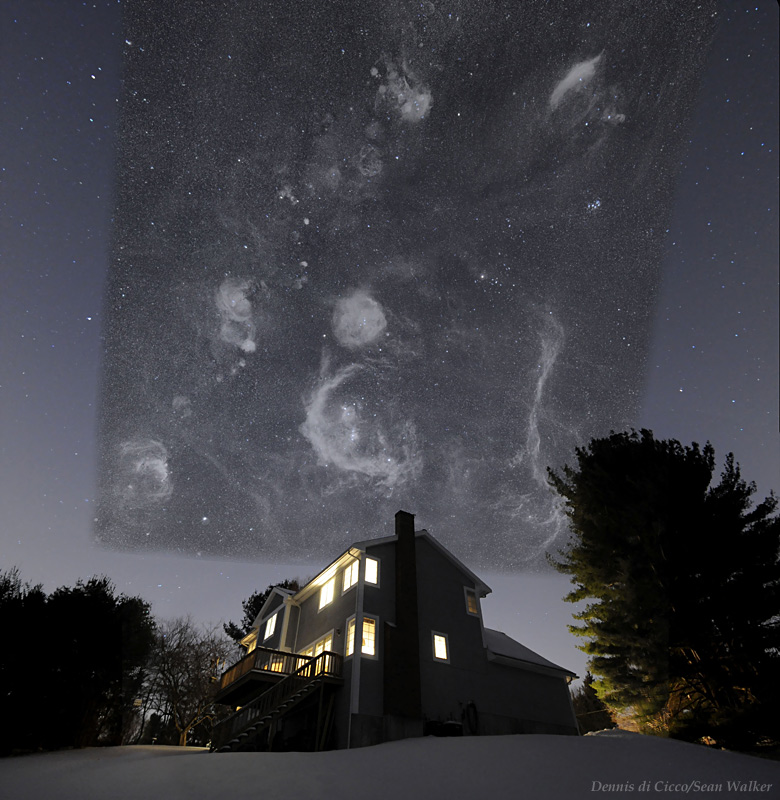
|
Credit & Copyright: Dennis di Cicco (TWAN) & Sean Walker,
Skyandtelescope.com
Explanation:
Intricate, glowing nebulae that shine in planet Earth's
night sky are beautiful to look at in deep images
made with telescopes and sensitive cameras.
But they are faint and otherwise invisible to the naked-eye.
That makes their relative location and extent on the sky
difficult to appreciate.
So, consider
this impressive composite image of
a wide region of the northern winter sky.
With a total exposure time of 40 hours,
the painstaking mosaic presents a
nebula-rich expanse known as the Orion-Eridanus
Superbubble
above a house in suburban Boston, USA.
Within the wide and deep view are nebulae more often seen
in narrower views, including
the Great Orion Nebula,
the Rosette Nebula,
the Seagull Nebula,
the California Nebula,
and Barnard's Loop.
The familiar constellation of Orion itself is just above the
foreground house.
Brightest star Sirius is left of the roof, and the recognizable
Pleiades star cluster is above the tree at the right.
A version of the big picture that includes simple
constellation
guidelines is
available
here.
|
January February March April May June July August September October November December |
| ||||||||||||||||||||||||||||||||||||||||||||||||
NASA Web Site Statements, Warnings, and Disclaimers
NASA Official: Jay Norris. Specific rights apply.
A service of: LHEA at NASA / GSFC
& Michigan Tech. U.
Based on Astronomy Picture
Of the Day
Publications with keywords: nebula - Orion
Publications with words: nebula - Orion
See also:
- Alnitak, Alnilam, Mintaka
- APOD: 2025 March 18 Á LDN 1235: The Shark Nebula
- A December Winter Night
- APOD: 2024 June 11 Á Colorful Stars and Clouds near Rho Ophiuchi
- APOD: 2024 January 31 Á Camera Orion Rising
- APOD: 2024 January 23 Á Deep Nebulas: From Seagull to California
- APOD: 2024 January 16 Á The Orion You Can Almost See
